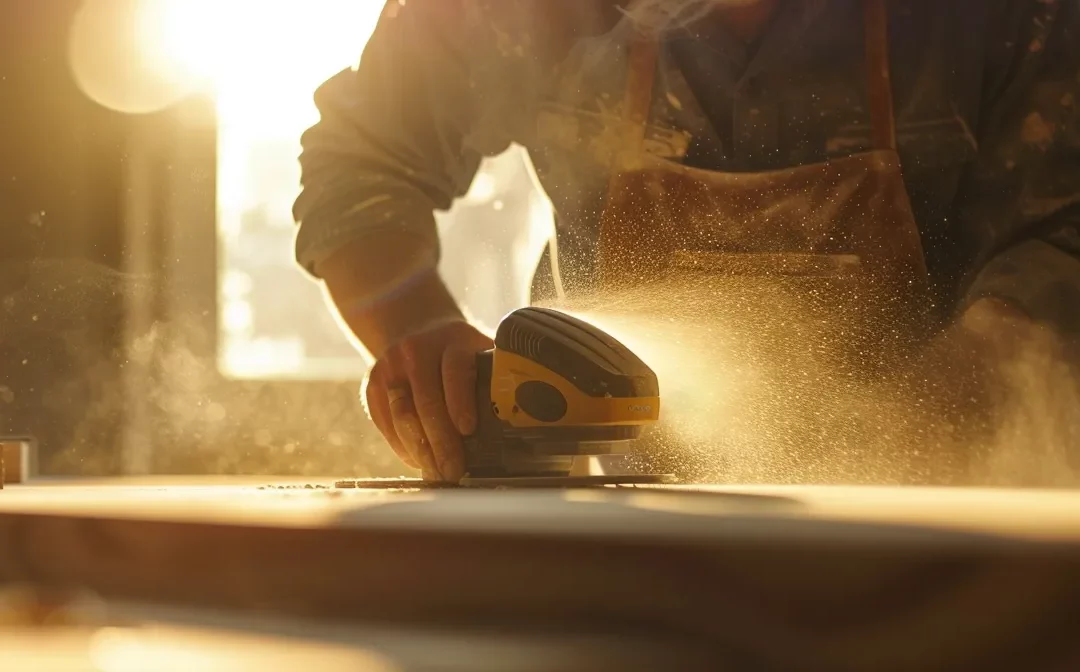Cabinet Refinishing vs Resurfacing: Exploring the Key Differences
When considering kitchen renovations, it’s essential to weigh your options carefully. Cabinet refinishing and resurfacing are two popular solutions that can breathe new life into your kitchen cabinet while minimizing dust and disruption, especially if you’re also updating other elements like the shower. Both methods have their merits and understanding the key differences can help you make a more informed decision. As members of the Master Builders Association of Victoria, we recognize how these choices can impact the final look and feel of your kitchen. Keep reading to gain insights into the pros and cons of each method, helping you choose the best approach for your unique space.
Understanding the Basics of Cabinet Refinishing and Resurfacing
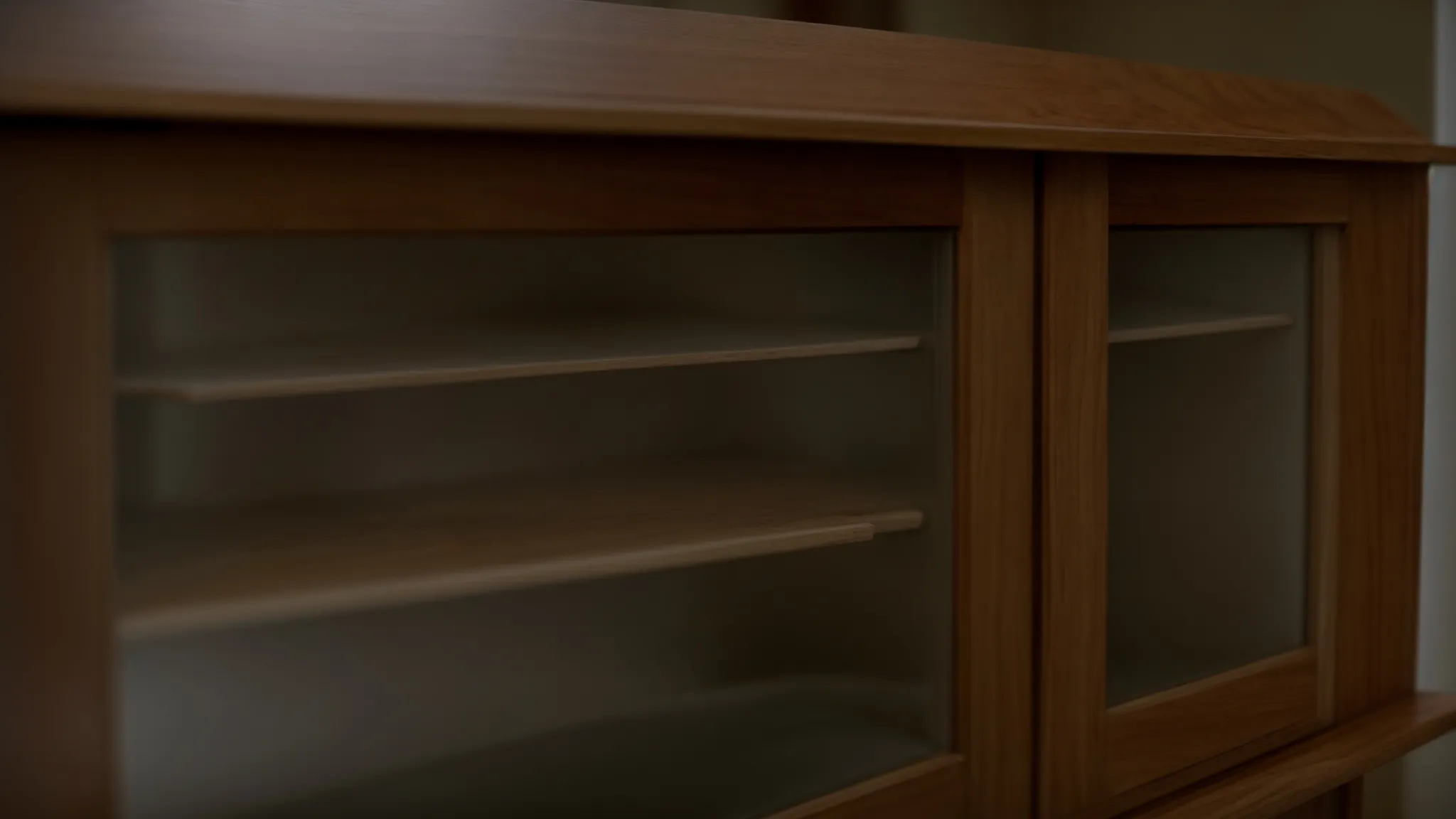
When considering updates for your kitchen renovations, it’s vital to understand the distinction between cabinet refinishing and resurfacing. Cabinet refinishing involves stripping down the existing finish, addressing any wear and tear, and applying a fresh coat to restore the wood’s original beauty, which pairs beautifully with materials like maple for a stunning appearance. On the other hand, resurfacing entails applying a new veneer or laminate over the existing cabinets to give them a completely new look without the need for intensive labor. Both processes address the wear of cabinetry over time, but the approach and results can differ significantly, impacting the overall aesthetic and functionality of your space.
Defining Cabinet Refinishing
Cabinet refinishing is an effective method for revitalizing tired cabinetry without complete replacement. This process, recommended by the Master Builders Association of Victoria, involves stripping away old varnish to expose the natural wood underneath, allowing for a fresh coat of cabinet painting that highlights the inherent beauty of the timber. It creates a seamless appearance that can beautifully complement other elements in your space, such as your countertop or even your bathtub, while using techniques that work well with wood veneer for durable results.
What Does Resurfacing Entail?
Resurfacing involves applying a new layer of material over your existing cabinetry, transforming its look while bypassing the need for intensive renovations. I often recommend this method to clients with hardwood or fiberboard cabinets; it’s a practical approach that can address issues like water damage effectively. The process typically includes using a brush to smooth out the new veneer or laminate, ensuring a professional finish that enhances the overall appearance of your kitchen or bathroom, while also allowing us to provide top-notch customer service throughout the project.
Key Differences Between Cabinet Refinishing and Resurfacing
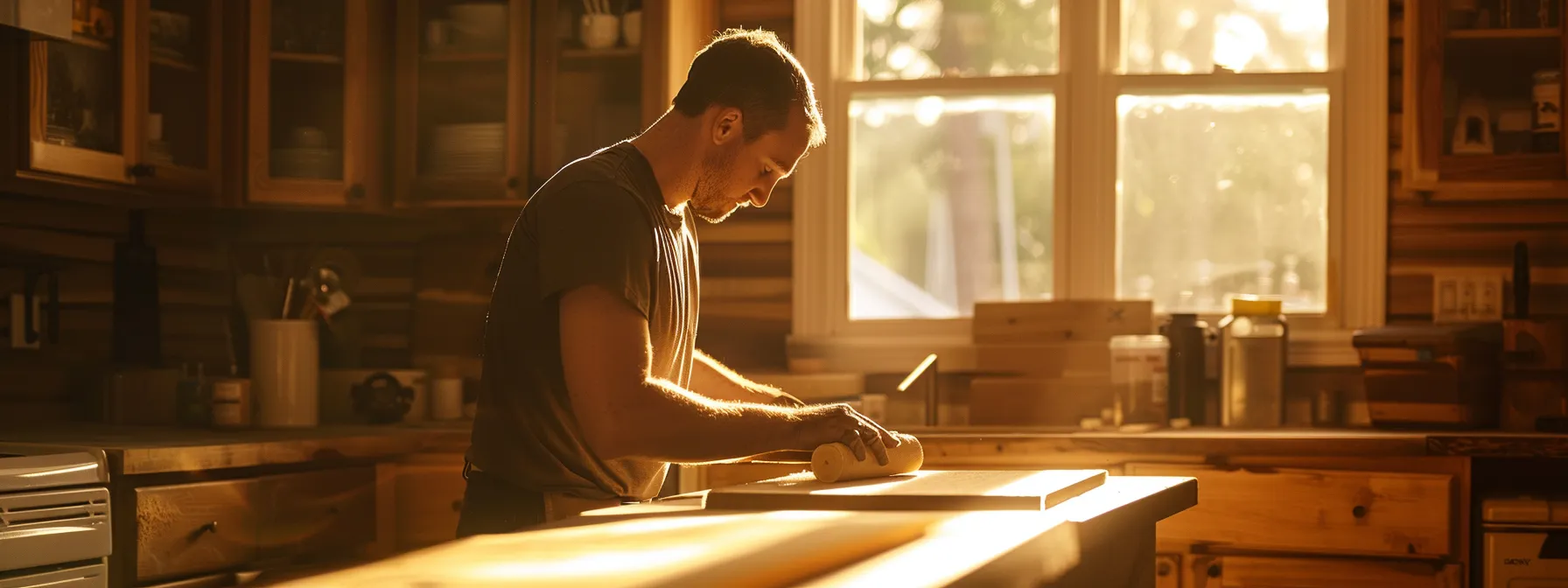
Understanding the differences between cabinet refinishing and resurfacing is essential for making informed decisions during your home improvement journey. Each method follows a distinct process, requiring different materials and techniques to achieve the desired outcome. For refinishing, you might utilize sandpaper, solvents, and paints, while resurfacing often involves veneer or laminate, particularly suitable for materials like particle board. Furthermore, the duration and potential for disruption to daily life can vary greatly between the two. By considering these factors, along with the terms of service provided by your renovation contractor, you can choose the right approach that aligns with your vision and lifestyle.
Process Involved in Refinishing vs. Resurfacing
When I guide clients through the process of cabinet refinishing, I emphasize the importance of careful preparation. It begins with removing the drawers and any hardware, ensuring every nook and cranny can be addressed. This approach allows us to create a stunning finish that enhances the room’s overall interior design while being environmentally friendly by using low-VOC paints from trusted brands.
In contrast, resurfacing offers a distinct method that captures my attention for its efficiency. This process involves applying a new veneer or laminate over existing cabinetry, which often requires less disruption in the room. I find that it produces a fresh look without the intensive labor, making it a popular choice for those wanting to quickly elevate their kitchen or bathroom’s interior design.
Materials Needed for Each Technique
When I consider the materials required for cabinet refinishing, I often recommend high-quality paints, solvents, and sandpaper to ensure a flawless finish. The selection of these materials is vital, especially when working on bathroom cabinetry where moisture resistance is crucial, particularly around the sink area. For clients specifically choosing to work with thermofoil, I ensure they’re aware of the unique application techniques needed to achieve the best results while still complementing elements like crown molding.
- Paints and solvents for refinishing
- Sandpaper and prep tools for a smooth finish
- Veneer or laminate for resurfacing
On the other hand, resurfacing requires fewer materials, primarily depending on the type of veneer or laminate chosen to overlay the existing cabinets. Each option can effectively transform the appearance of spaces, often with minimal disruption to your daily life, making it an appealing choice for those of us considering an upgrade.
Duration and Disruption of Daily Life
When discussing cabinet refinishing and resurfacing with clients, I often highlight the timeline and potential interruptions that each method entails. Refinishing typically requires more extensive work, which can lead to a longer process that temporarily affects daily routines, especially in high-traffic areas such as the kitchen or even the bedroom. Conversely, resurfacing is generally quicker and allows for a smoother transition, enabling families to enjoy a fresh look without significant disruption, ultimately contributing to a greater return on investment considering their zip code and local market trends.
Pros and Cons of Cabinet Refinishing
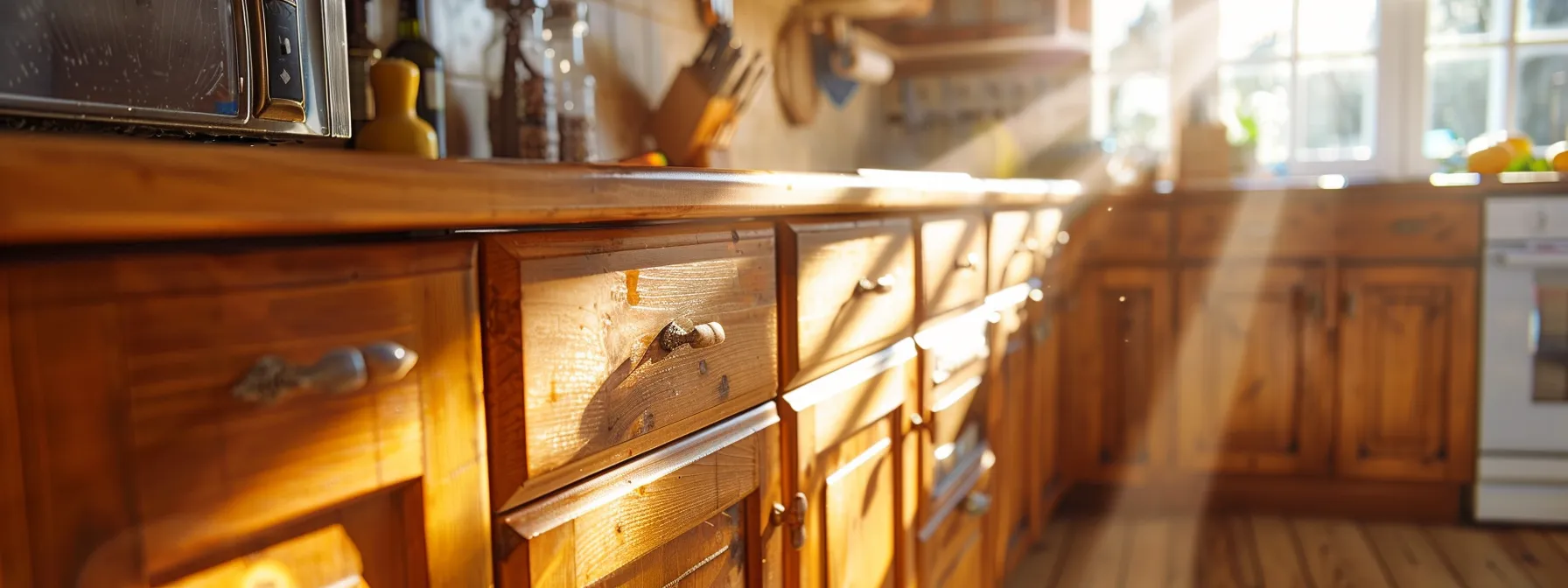
When considering cabinet refinishing, it’s essential to weigh both the advantages and potential drawbacks. I often find that refinishing can breathe new life into oak cabinetry, providing a stunning wood finishing that showcases its natural beauty. This method can be particularly appealing because it allows for customization while also being budget-friendly. However, it’s crucial to be aware of some challenges, such as the possibility of mold in moisture-prone areas, which may affect the longevity of the finish. At our company, we always encourage potential clients to request a free estimate to assess their specific situation, ensuring that they understand the warranty that backs our work and can make an informed decision.
Advantages of Choosing to Refinish
Opting for cabinet refinishing is a financially savvy choice for homeowners looking to achieve a beautiful makeover without a hefty expense. With the right techniques—using sandpaper to prepare surfaces and applying a quality stain—the transformation can be both striking and cost-effective. In my experience, the price of refinishing often falls significantly below that of complete replacements, making it an ideal solution for rejuvenating the appearance of your cabinetry.
Potential Drawbacks to Consider
While cabinet refinishing offers many benefits, it’s important to consider some potential drawbacks. One challenge I’ve encountered is that, if not done correctly, the finish can wear off more quickly in high-moisture areas, like kitchens or bathrooms, leading to additional maintenance down the line. Additionally, the prep work required can be time-consuming, and if you’re not careful with your design choices, the results may not align with your vision for the space.
Pros and Cons of Cabinet Resurfacing
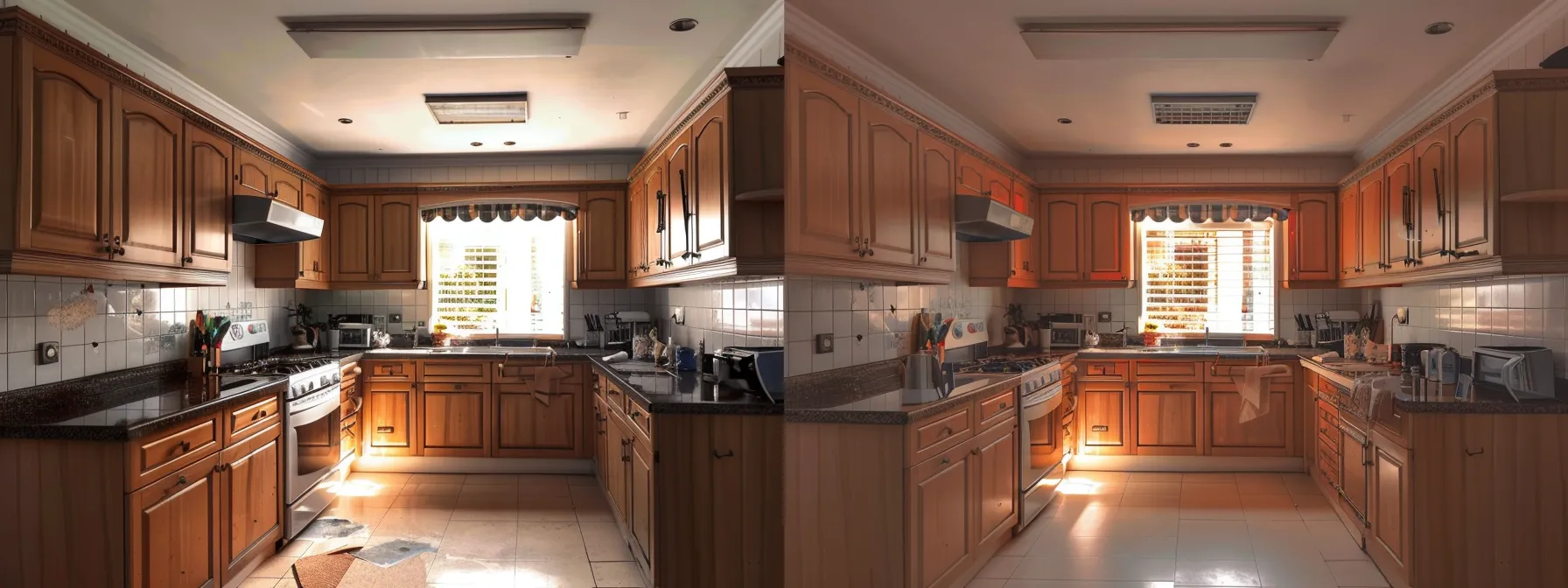
As I guide clients through the decision-making process regarding cabinet resurfacing, I often emphasize its distinct advantages and limitations. The primary benefit of resurfacing lies in its ability to provide a fresh aesthetic at a fraction of the cost of a complete remodel. This method effectively transforms outdated cabinetry with minimal effort, making it an appealing option for those desiring quick and impactful updates. However, it’s equally important to recognize the limitations; resurfacing may not adequately address underlying issues such as structural damage or severe wear. Understanding these elements allows homeowners to make informed choices that align with both their budget and intended outcomes.
Benefits of Opting for Resurfacing
Choosing to resurface cabinets can be an excellent decision for homeowners seeking a quick and effective solution to update their space. It’s a streamlined process that allows me to help clients achieve a fresh look without the extensive labor involved in a full remodel. This approach not only enhances the aesthetic appeal of cabinetry but also significantly reduces the project timeline, ensuring less interruption to daily life.
Limitations of Cabinet Resurfacing
While cabinet resurfacing can provide a fresh look with minimal effort, it has its limitations. This method often falls short in addressing deeper issues like structural damage or significant wear that may not be visible at first glance. As I assess cabinetry for resurfacing, I remind clients that if the underlying material is compromised, simply applying a veneer may not resolve the problem in the long run.
It’s essential to consider the following limitations:
- Does not fix underlying structural issues.
- May not last as long if existing materials are damaged.
- Less suitable for extensive renovations requiring comprehensive updates.
Cost Comparison: Refinishing vs. Resurfacing Cabinets
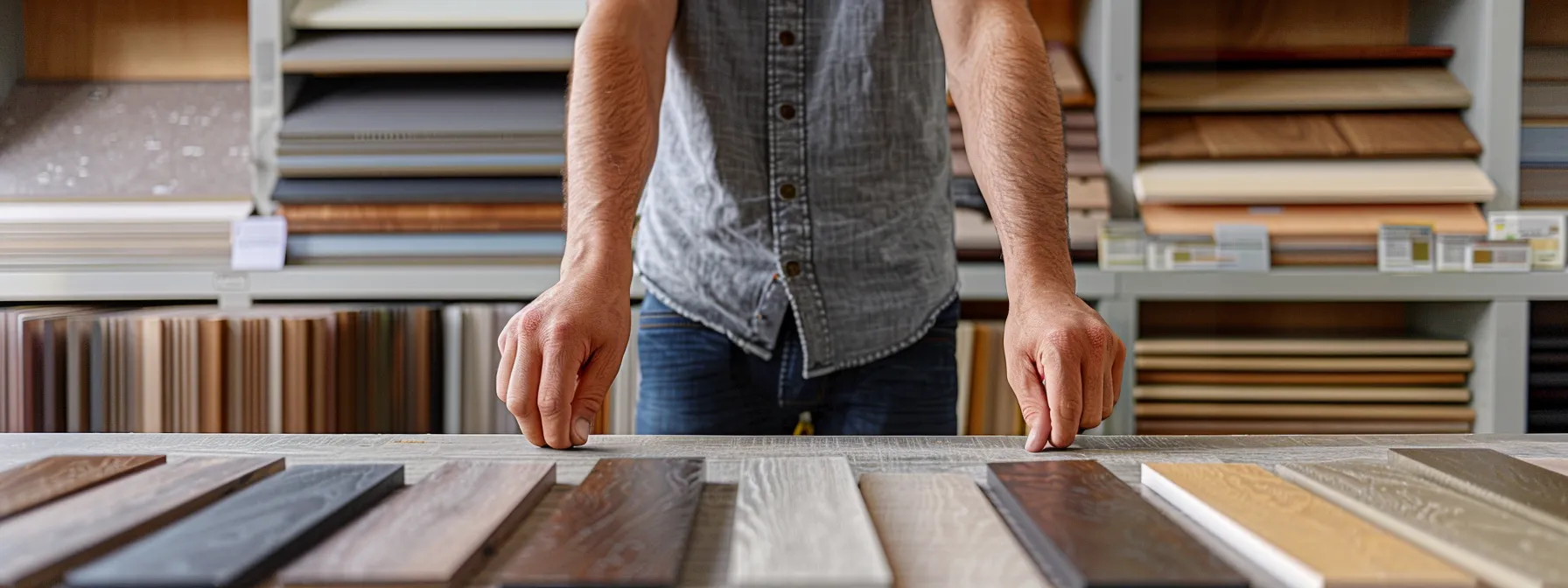
When weighing your options between cabinet refinishing and resurfacing, understanding the cost involved is essential. I’ve seen that the average cost for refinishing typically ranges significantly based on factors like the size of the cabinetry, the condition of the wood, and the specific finish chosen. On the other hand, estimating the expense of resurfacing may vary depending on the type of veneer or laminate selected and the extent of the work required. By reviewing both methods’ financial aspects, homeowners can make informed decisions that align with their budgets and expectations for their space.
Average Cost Range for Refinishing
In my experience, the average cost for cabinet refinishing usually falls between $1,500 and $5,000, depending on several factors such as the size and condition of the cabinetry, as well as the specific materials used for the finishing. I’ve found that larger spaces or intricate designs may drive costs higher, but the investment can be worthwhile given the significant aesthetic improvement and longevity it can bring. By evaluating your cabinetry‘s current state and consulting with a professional, you can get a more tailored estimate that aligns with your project goals.
Estimating the Expense of Resurfacing
When estimating the expense of resurfacing cabinets, I typically consider factors such as the type of material chosen for the veneer or laminate and the size of the cabinetry. Costs can vary widely, with basic laminates offering a budget-friendly option, while higher-end veneers can elevate the overall project investment. It’s a good idea to review your specific project details and consult with a professional to better gauge the financial commitment involved.
Making the Right Choice for Your Kitchen
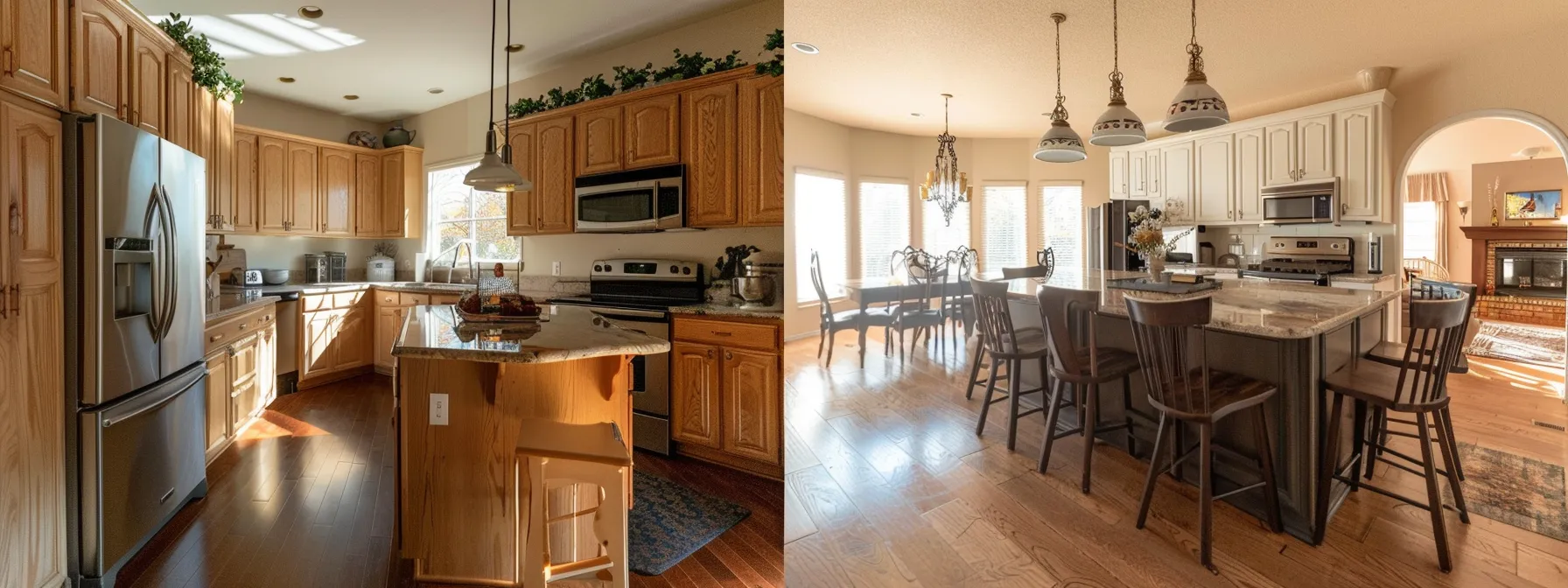
Choosing the right method for your kitchen cabinets involves a few key considerations that can significantly impact the outcome of your renovation. First, I always recommend assessing the overall condition of your cabinets; identifying any existing issues is crucial in determining whether refinishing or resurfacing is more appropriate. Next, understanding your aesthetic goals is essential. Do you want to maintain the classic look of your wood or are you ready for a modern twist? Equally important is your budget, as both options come with different financial implications. By carefully evaluating these factors, you can make an informed decision that aligns with your vision and enhances your kitchen’s functionality and style.
Assessing Your Cabinets’ Condition
When I’m evaluating cabinets for a renovation project, I pay close attention to their overall condition to determine the best approach. I often check for signs of water damage, warping, and structural integrity, as these factors will influence whether refinishing or resurfacing is appropriate. This assessment helps me to provide tailored recommendations that align with both my clients’ aesthetic desires and the functional needs of their space.
Considering Your Kitchen’s Aesthetic Goals
When guiding clients in selecting cabinetry finishes, I focus on the overall aesthetic goals for their kitchen. Determining whether they prefer a traditional, rustic look or a modern, sleek design sets the stage for the decision between refinishing and resurfacing. By understanding these visual aspirations, I can help them choose a solution that not only meets their needs but also enhances the atmosphere of the space.
Understanding these preferences can be pivotal for homeowners, as the right choice directly influences the aesthetic appeal and overall functionality of their kitchen space. Making informed decisions can turn a renovation into a cohesive design statement that resonates with their individual tastes and lifestyle.
Budgetary Considerations
Considering your budget is a crucial step when deciding between cabinet refinishing and resurfacing. I’ve seen clients benefit from refinishing as it often requires a lower financial investment while delivering stunning results, yet resurfacing can also be a smart choice when aiming for a quick and impactful update. By evaluating quotes from professionals and considering the long-term benefits of each approach, you can make an informed decision that fits both your aesthetic goals and financial plans.
Conclusion
Understanding the differences between cabinet refinishing and resurfacing is crucial for making an informed decision regarding your kitchen or bathroom renovation. Each method offers unique benefits and limitations, impacting both the aesthetic outcome and the overall cost. By assessing the condition of your cabinets, considering your design goals, and evaluating your budget, you can select the most suitable option for your needs. Ultimately, this knowledge empowers you to create a space that reflects your vision while maintaining functionality.
